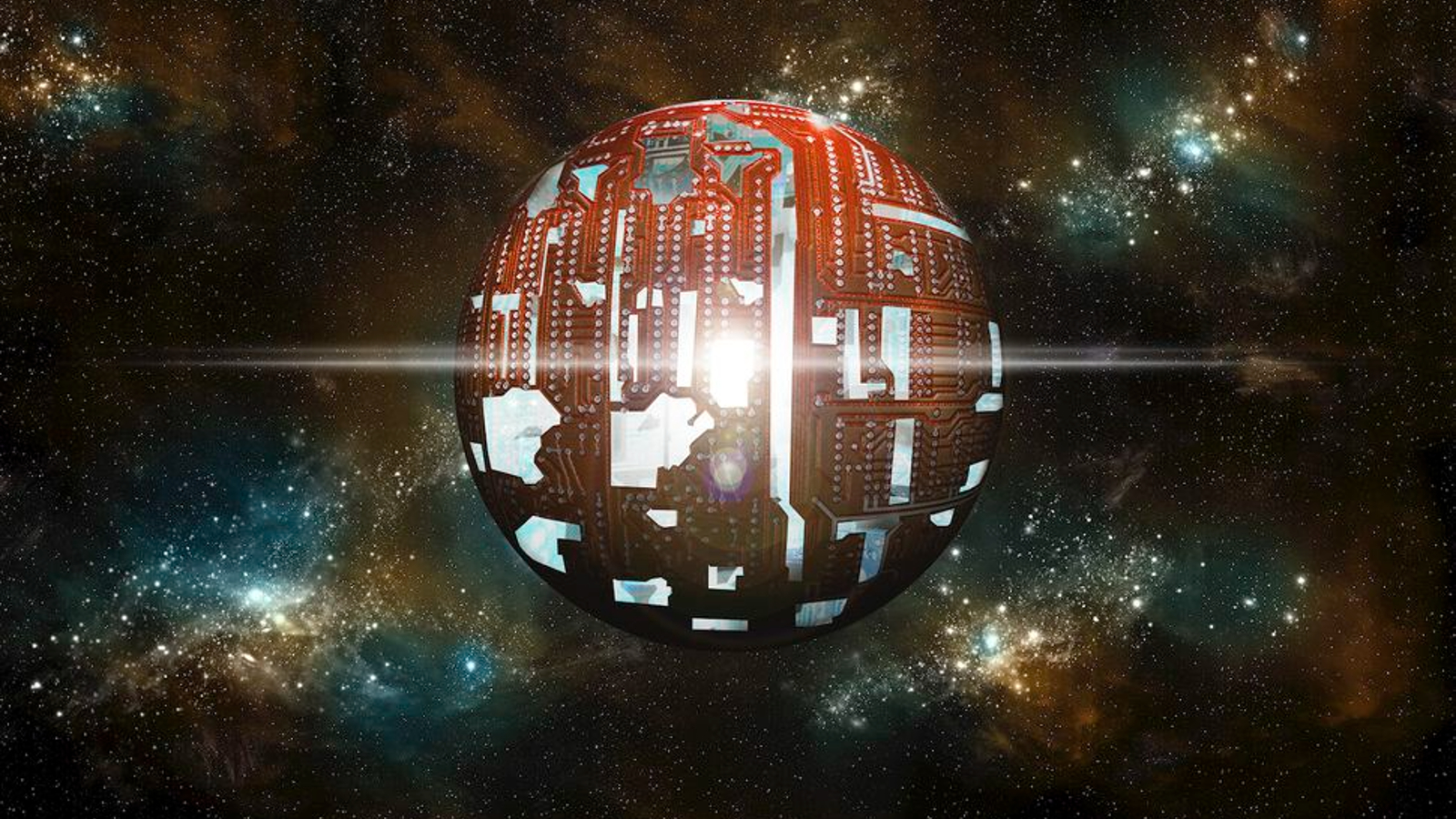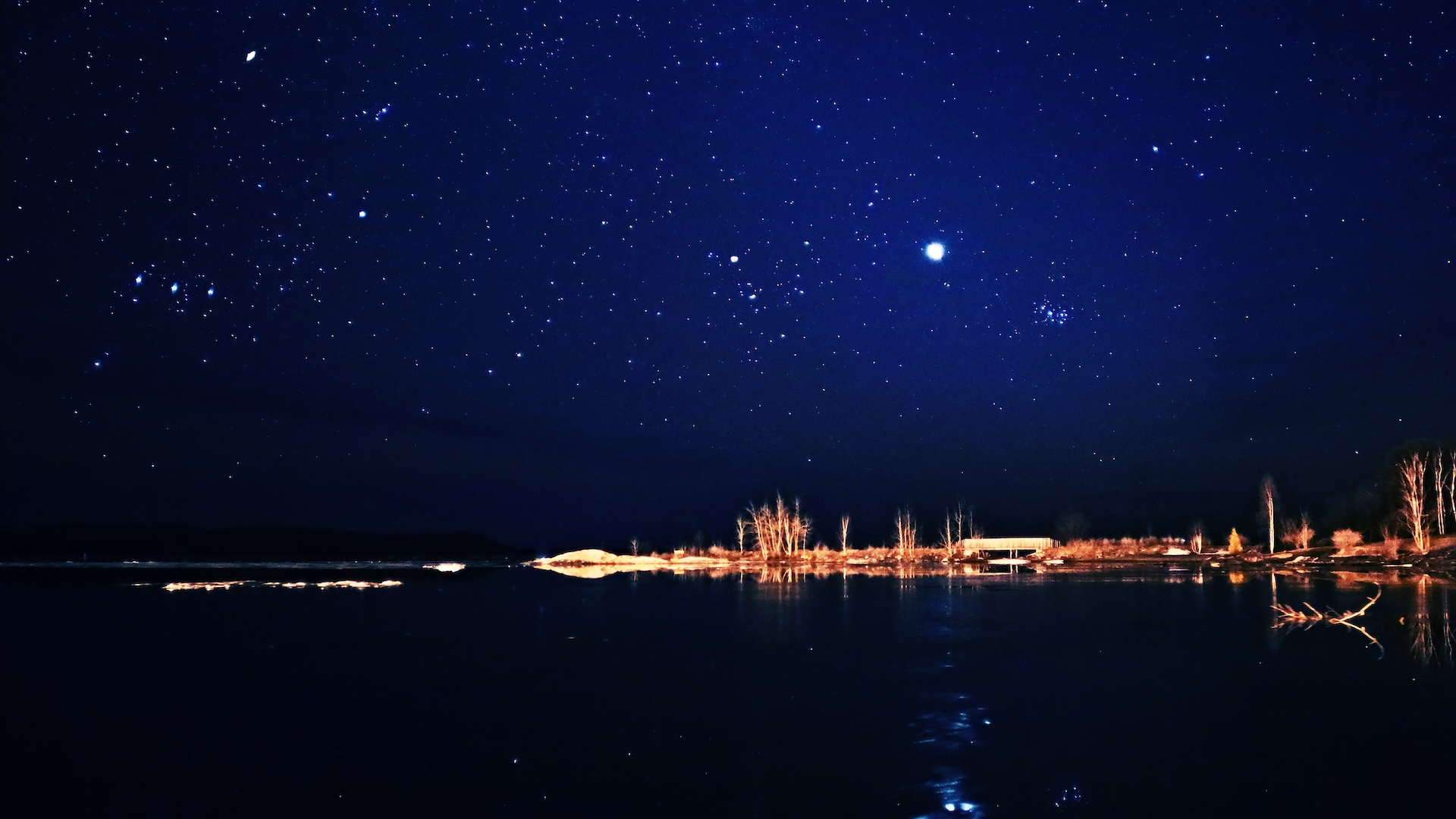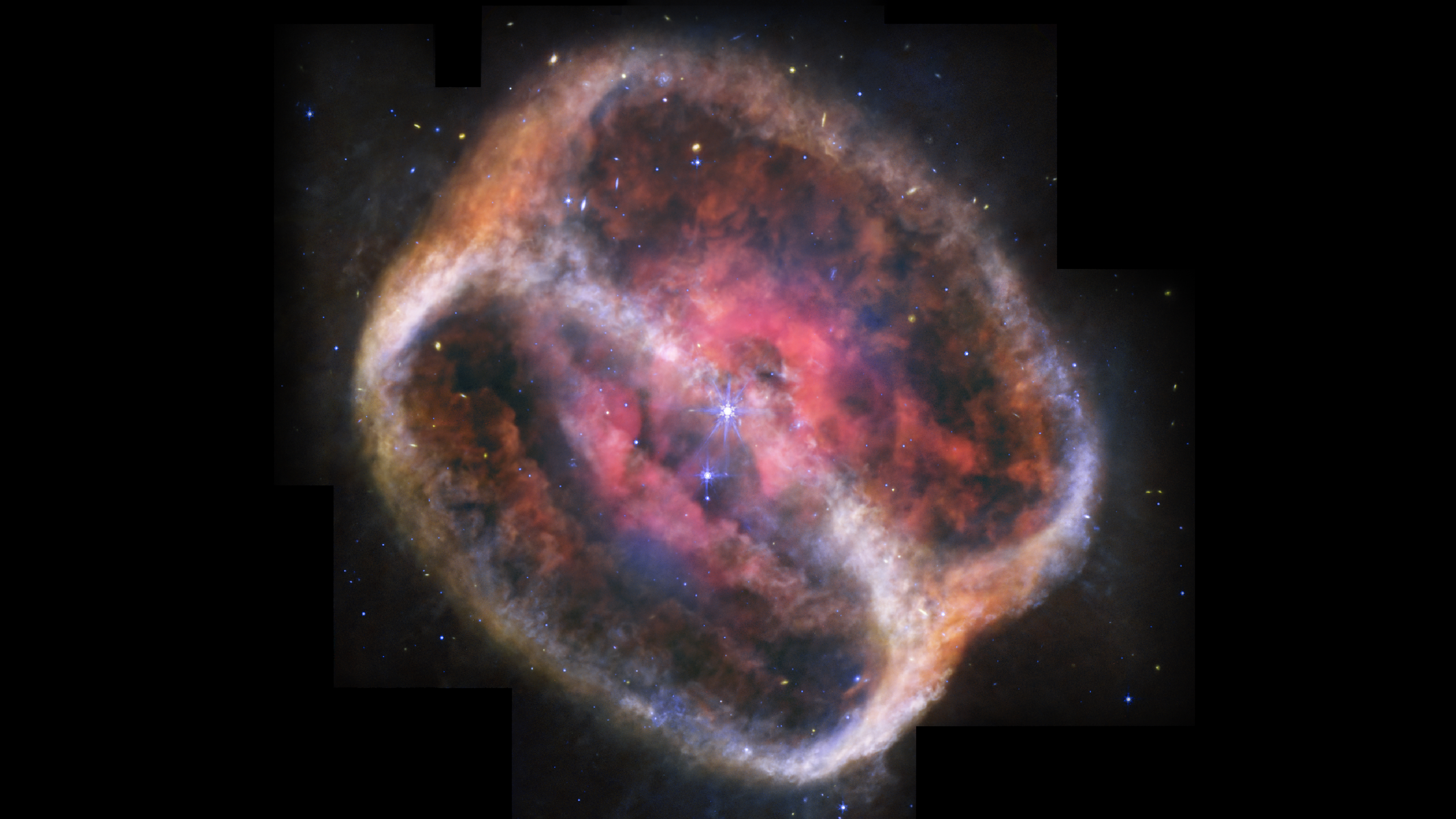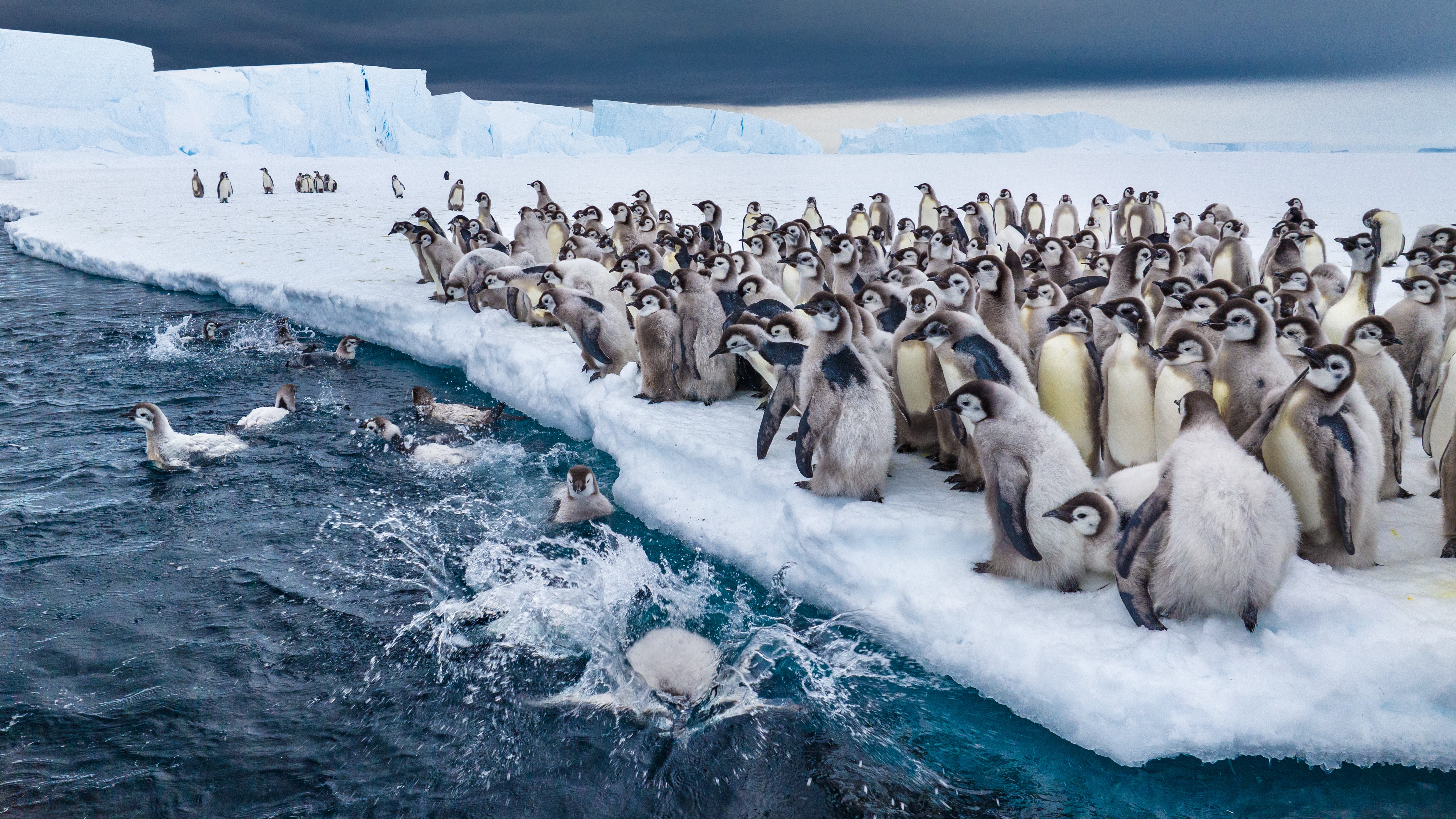Mystery of Deadly 1946 Tsunami Deepens

A mystery surrounding one of the most destructive tsunamis of the 20th Century just got more puzzling as a seafloor search failed to reveal the smoking gun scientists expected to find.
On April Fools Day in 1946 an earthquake off the coast of the Aleutian Islands in Alaska spawned a series of waves known as a tsunami. One wave as high as a 13-story building hit locally. Others raced across the Pacific, killing dozens and leaving a trail of destruction that stretched to California and even South America.
The earthquake was too small to spawn the huge local wave, many scientists agree, and they have struggled for decades to figure out what happened. The leading theory has been that the earthquake triggered an underwater landslide, generating a one-two punch.
But a seafloor-mapping project by Scripps Institution of Oceanography, designed specifically to look for the cause of the tsunami, didn't find evidence to support that theory.
"We found no landslide where there should have been a landslide, where I was positive there had to be a landslide," Gerard Fryer, a geophysics professor at the University of Hawaii, told LiveScience. "I was stunned that there was nothing there."
Complex waves
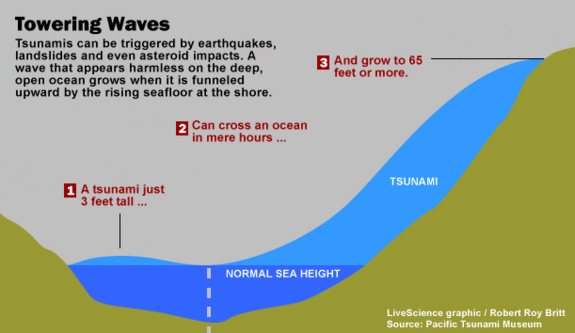
Tsunamis can result from earthquakes in the seafloor, underwater landslides, and more rarely volcanic eruptions. Even an asteroid impact can trigger one.
Sign up for the Live Science daily newsletter now
Get the world’s most fascinating discoveries delivered straight to your inbox.
Whatever the cause, two tsunamis are created. A local one moves toward the nearest coastline, and another travels into the deep ocean. In each case, the tsunami is actually a series of waves, much like what you can produce by paddling your hand in the bathtub.
The word tsunami is Japanese for "great harbor waves." On the open ocean, however, they are barely noticeable, looking from the surface like any other wave. But underneath, a tremendous well of energy lurks.
The height of a tsunami is not apparent until it travels up from the deep sea into the shallow waters along a coastline and rushes inland. Just as the your bathtub waves splash up the edge, tsunamis are forced upward to varying extent depending, in part, on the slope of the shore they meet.
Contrary to popular belief the surge of a tsunami does not appear as a great crashing wave. Rather, it is a very strong and fast moving tide that can destroy homes, overturn train cars, and deposit boats several block inland.
Hawaii takes the brunt
The first wave of the tsunami on that April 1st nearly six decades ago reached the big island of Hawaii in about five hours. The Hilo waterfront was destroyed. Surges as tall as two- and three-story buildings pounded several coastal villages. In Haena, the tsunami reached its maximum height — in Hawaii, anyway — of 45 feet (13.7 meters).
The calamity killed 159 people in Hawaii and caused $26 million in damage — in 1946 dollars.
The Pacific Ocean is a big place, and the waves spread. Surges up to 14 feet swamped Half Moon Bay, California. One person drowned in Santa Cruz. Fishing boats were damaged as far south as Chile.
The local tsunami in Alaska rose as high as 138 feet (42 meters), according to research by Emile Okal at Northwestern University. It destroyed the steel-reinforced Scotch Cape lighthouse on Unimak Island.
It was this local surge that Fryer and Okal agree could not have been spawned by the earthquake alone.
Doesn't add up
The 1946 Alaska earthquake had a magnitude of 7.1. Based on what scientists understand about the energy and characteristics of the earthquake, it should not have been able to generate either such a large local surge or such a devastating Pacific-wide tsunami. The idea of a landslide contributing to the total energy was paired by some scientists with a theory that the earthquake was larger than the instrumentation of the day could measure.
Okal studied the earthquake and its aftershocks, which originated across a broader area than would be expected. That suggests the main temblor was more of a slow rumble than an abrupt break in the planet's crust.
The slow movement, Okal says, would have been difficult for seismometers of the era to measure. He calculates a true size of the earthquake at around magnitude 8.5, which comes close to accounting for the tsunami's effects in Hawaii.
Yet questions surrounding the size of the local tsunami, the taller one that came ashore in Alaska, remain following the Scripps Institution's seafloor mapping expedition, which was conducted in July.
"We found seafloor evidence that will cause tsunami modelers to rethink the cause and characteristics of the 1946 tsunami," Tony Rathburn, a faculty member at Indiana State University, said in a statement last month. "Our findings make the causes of the 1946 tsunami even more mysterious."
Not giving up
Okal says it still may be possible a landslide was involved in the complex events of 1946. He said there are important variables, including where the Scripps project looked and the size of landslide the searched for.
"If they were looking for an elephant and there was only a dog, they could say there was no elephant but they weren't even looking for the dog," Okal said in a telephone interview last week.
Fryer has some new ideas that might resolve the mystery, but he's not ready to share them. He and Okal both plan to stick with the investigation.
"Almost 60 years after the event, the 1946 tsunami is still making fools of all of us," Fryer said.
In 1946
Mr. [Hilario] Aquino said that when the waves hit the church, he was tossed out amidst the children. He swam about rescuing the children and lifting them up into the large trees of the church yard. When the waves subsided, 10 of the children were safely clinging to the trees and their parents all agreed that Mr. Aquino had saved their lives.
-- From the Honolulu Star Bulletin, April 05, 1946



